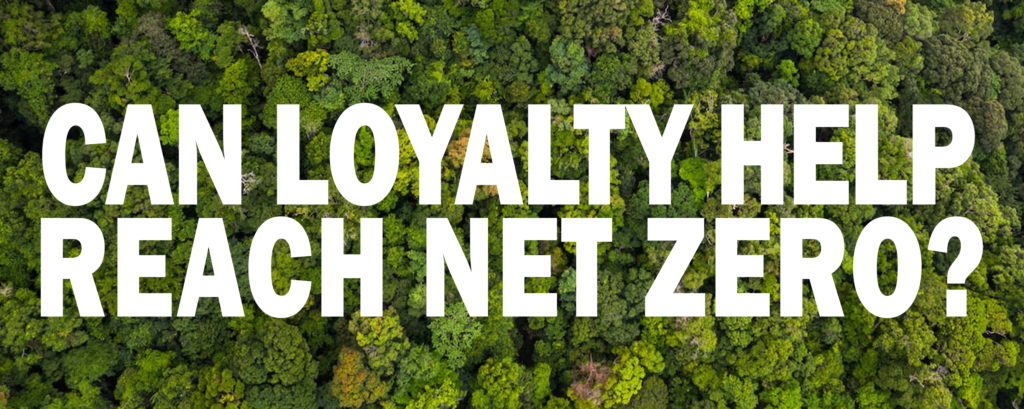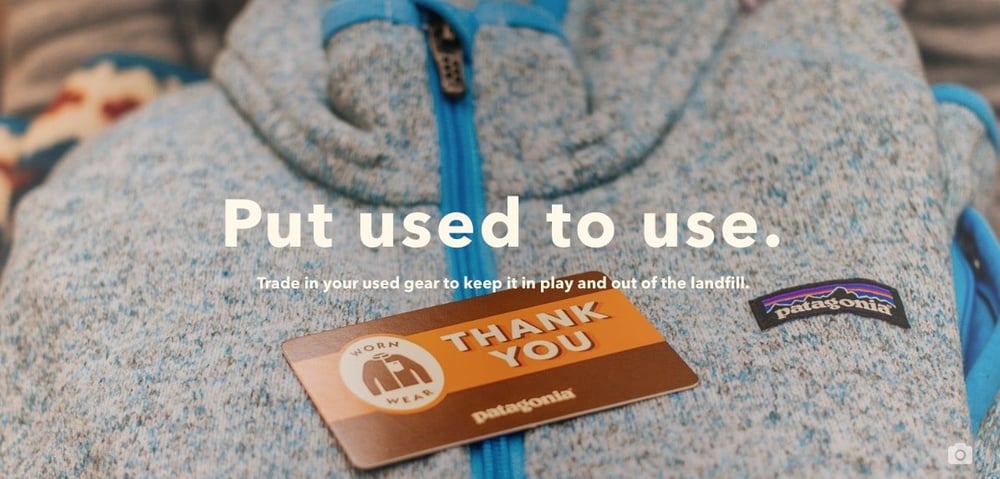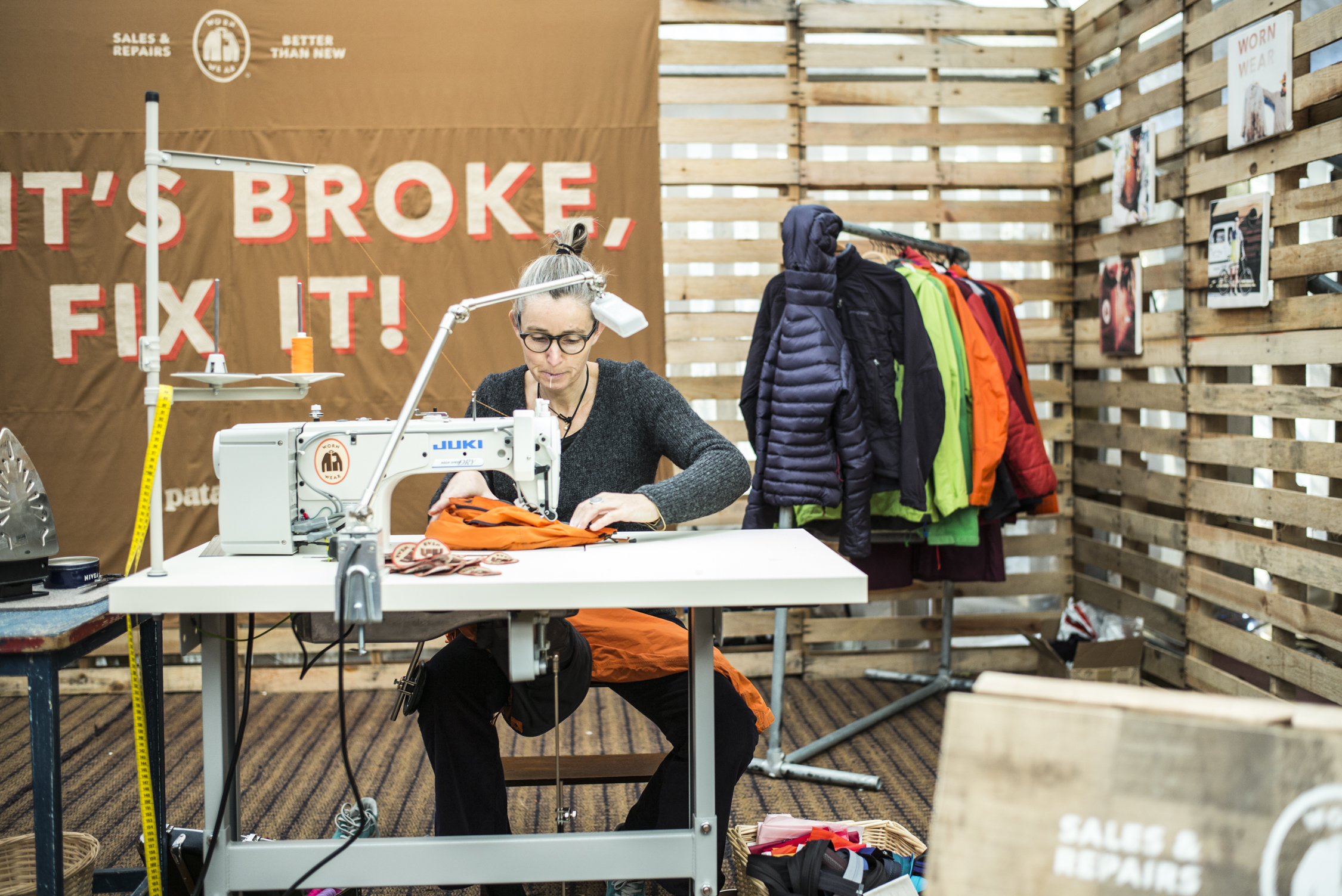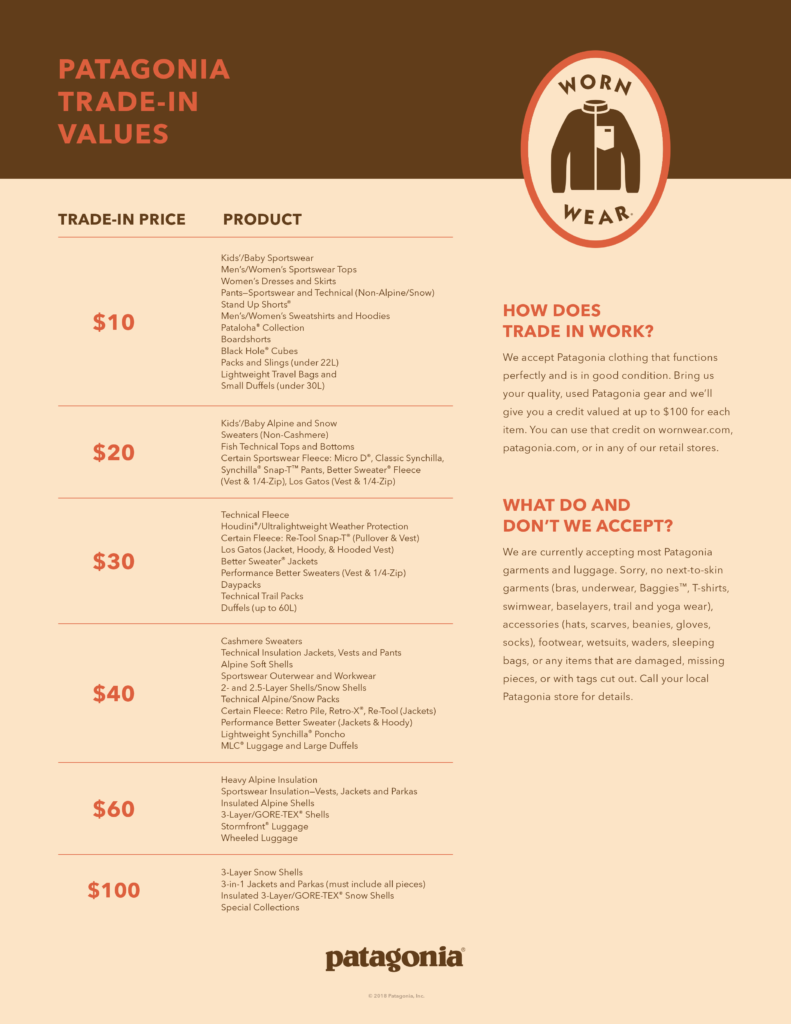
As per the United Nations, currently, the Earth is already about 1.1°C warmer than it was in the late 1800s, and emissions continue to rise. To help prevent global temperatures rising more than 1.5°C — as called for in the Paris Agreement — emissions need to be reduced by 45% by 2030 and reach net zero by 2050.
A growing number of companies are already incorporating loyalty into their business practices with these targets in mind. One notable example is Patagonia, which has committed 1% of their sales to the conservation and restoration of the natural environment. In addition to this financial contribution, the company engages in various activities aimed at educating and rewarding customers for their efforts.

Patagonia has established a distinct position within the outdoor apparel industry by integrating environmental activism and sustainability into the core of their brand identity. This commitment extends beyond the use of recycled materials to encompass their entire business model, including initiatives such as the innovative Worn Wear program.

According to Patagonia, the apparel industry is responsible for up to 10% of the global greenhouse gasses emitted to the world [a] and every year 85% of clothing waste goes landfilled or incinerated.
As individuals, the single best thing consumers can do for the planet is to keep the stuff they buy in use longer and minimise their overall consumption.
While this may seem contradictory to what a retail company typically desires — consumers purchasing more of their product — Patagonia and the Worn Wear program illustrates how loyalty can help reach the net zero target and be profitable.


How? First, everyone can contribute by buying less, opting for used items, repairing more, and purchasing only what they truly need. Second, companies can encourage and support consumers’ sustainable behaviours through incentives.
The Worn Wear program works simply while addressing a complex issue.
When Patagonia customers have maximised the utility of their gear and no longer need it, they can trade it in on WornWear.com or at a Patagonia store. As a reward, Patagonia then provides them with credit to use on items they actually need.
The company will repair, reuse, or repurpose Patagonia items, which helps avoid the need to source new material, manufacture new items, and negatively impact the planet and by providing credit for trade ins, it ensures that gear stays in use longer and out of the landfill.
Why Patagonia may have chosen a credit program over other options?
A credit program is where members earn a credit amount for future spending on the company’s products. This may be in the form of a voucher or held in their account. They are typically designed in such a way that the margin required to cover the cost of the credit is built into the price of the product. Thus, the member perceives they are receiving incremental value, while the company can control the costs of the program.
In the case of Patagonia, the cost of the credit is built into the savings generated from repairing gear instead of manufacturing and the earnings for reselling the gear, enabling them to also control the cost of the program and provide very attractive credit amounts — up to $100 for each item.
How does a credit program model compare to other program models?
One advantage credits have over closely related loyalty program models, such as discounting is they may be more likely to be perceived as something tangible (a specific dollar amount visible in the member’s account vs an unallocated percentage).
A credit which the member has earned and feels ownership over may be more likely to tap into the endowment effect and loss aversion biases, meaning the member may be more reluctant to lose access to their credit, compared to a discount.
An additional advantage is that credits avoid creating a negative precedent (i.e. members expect to see the same thing next time and hold off purchasing until another discount becomes available) or lower perceived value in the same way that discounts can generate.
Likewise with a points program model. While a member has earned them and feels ownership over them, points may not feel as tangible as a dollar amount.
The program could offer cashback, often delivered as credit in loyalty programs, but in the customers’ mind, could be perceived as the equivalent to receiving cash or a bank deposit. This approach would carry the risk that customers might simply pocket the money and not buy repurposed gear, defeating the program’s objective.
A study by a team of marketers, (Vana et al, 2018)1 found evidence that credit programs increase the probability that consumers will make an additional purchase and increase the size of the spend. Loyalty & Reward Co theorise that members engage in mental accounting of the available credit and association with the brand, so they are more easily able to justify spending more money there.

Can loyalty contribute to achieving net zero?
Patagonia demonstrates how corporations can champion impact and sustainability by leading the retail industry in sustainable business practices while recognising the pivotal role consumers play. They show how loyalty programs can nudge consumers towards more sustainable choices, providing value and influencing preferred consumer actions.
To conclude, loyalty programs such as the Worn Wear program can make a significant contribution to reaching net zero targets. However, for them to be effective, companies integrating loyalty into their environmental commitments can learn from Patagonia’s approach.
- Be committed to the end goal, not just profits
- Provide value to members
- Plan a commercially viable loyalty program that supports consumer desired behaviours

To explore the potential of incorporating sustainability into a loyalty program or creating a new loyalty program, brands can turn to consultants like Loyalty & Reward Co, which specialises in helping brands design and implement commercially sound and effective loyalty programs.
- Vana, Prasad and Lambrecht, Anja and Bertini, Marco, Cashback Is Cash Forward: Delaying a Discount to Entice Future Spending (May 17, 2018). Journal of Marketing Research, Vol. 55, No. 6, 2018. ↩︎


